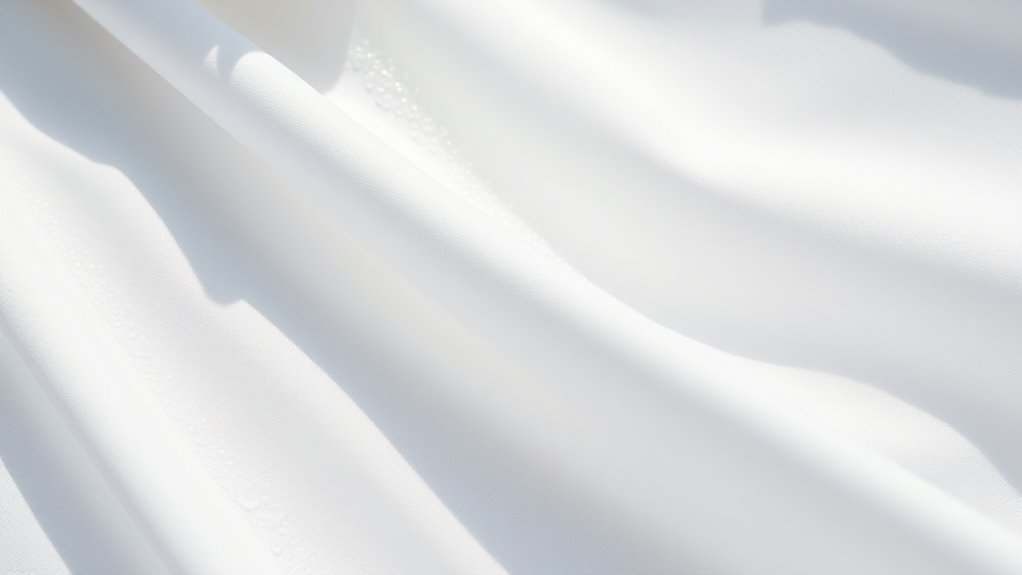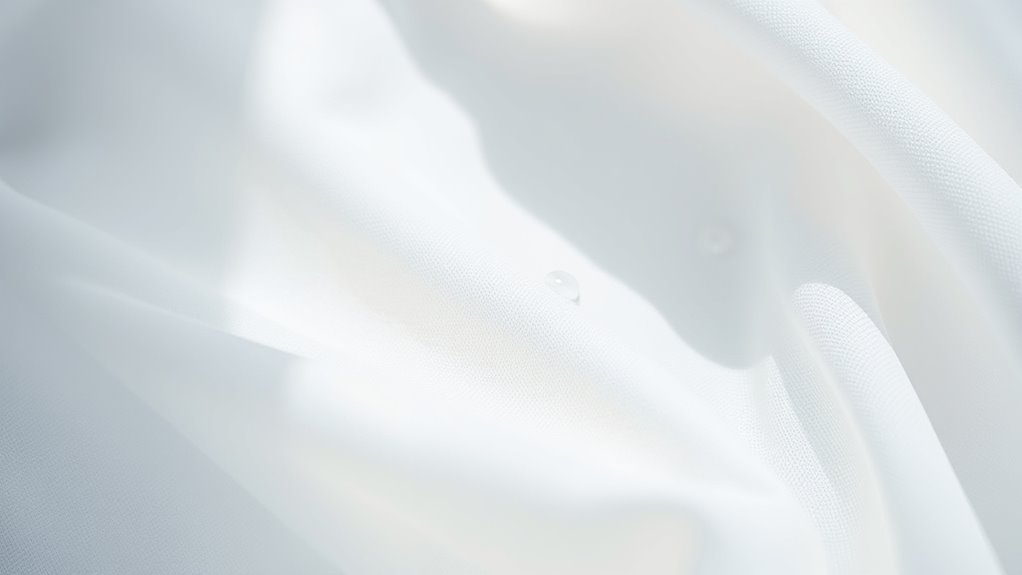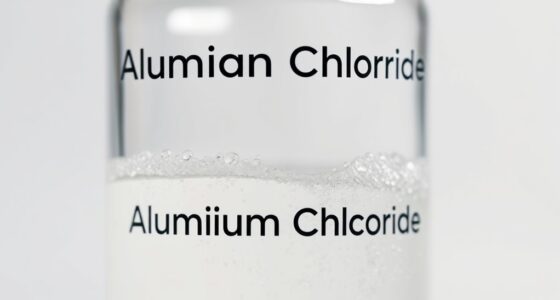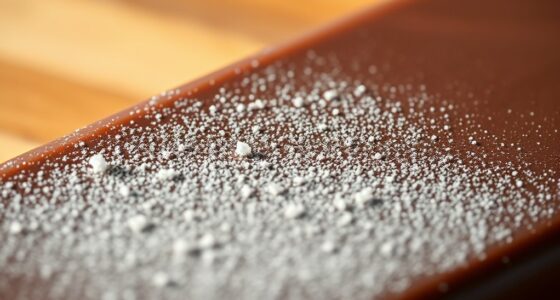Bleach whitens fabrics by using controlled chemical reactions that oxidize stains through the addition of oxygen, breaking down dirt and organic substances without harming fibers. Proper dilution and limited exposure time guarantee these reactions effectively remove discoloration while preventing fabric damage. Rinsing thoroughly stops the process at the right moment, maintaining fabric strength. To learn how to balance these reactions safely and achieve bright results, keep exploring the details behind the process.
Key Takeaways
- Proper dilution of bleach ensures controlled oxidation, effectively removing stains without damaging fibers.
- Limiting contact time prevents over-oxidation and preserves fabric integrity during the whitening process.
- Rinsing thoroughly after bleaching stops chemical reactions, protecting fabrics from weakening.
- Selecting appropriate bleach types and concentrations based on fabric type minimizes potential damage.
- Understanding fabric properties helps tailor bleaching techniques for effective whitening without ruining textiles.

Have you ever wondered how bleach manages to turn stained or dingy fabrics so white? It all comes down to the way bleach interacts with the molecules that cause discoloration. When you apply bleach to fabric, it triggers specific chemical reactions that break down complex stains like dirt, sweat, or organic substances.
These reactions involve the active ingredients in bleach—most commonly sodium hypochlorite or hydrogen peroxide—oxidizing the stain molecules. Essentially, they add oxygen atoms to these molecules, transforming them into smaller, colorless compounds that are no longer visible, leaving your fabric looking brighter.
But while bleach is powerful, its effectiveness hinges on controlling these chemical reactions carefully. If reactions happen too quickly or aggressively, they can damage the fabric fibers, compromising fabric integrity. This is why it’s crucial to follow proper dilution instructions and avoid leaving bleach on fabrics for too long.
When used correctly, bleach penetrates the fibers just enough to remove stains without harming the overall fabric structure. This balance ensures that your clothes stay white and fresh without becoming fragile or prone to tearing.
The key to whitening without ruining your fabrics lies in understanding how bleach interacts on a molecular level. It doesn’t just bleach out stains; it chemically alters the molecules that cause them. Proper application ensures these reactions occur uniformly, preventing uneven spots or discoloration.
Additionally, bleach’s ability to penetrate the fabric depends on factors like fabric type, concentration, and exposure time. Thicker or more delicate fabrics require gentler treatment, so you might dilute the bleach more or shorten the contact time, safeguarding the fabric’s integrity. Knowing the fabric properties helps you select the appropriate bleaching method for different textiles.
You should also consider rinsing thoroughly after bleaching. This step stops the chemical reactions, preventing continued damage or weakening of the fibers. Using appropriate water temperatures and adding neutralizing agents, if recommended, can further protect your fabrics.
Understanding the chemical reactions involved allows you to adjust your cleaning methods for optimal results. When you understand how bleach works on a molecular level, you can use it more effectively and safely. It’s not just about making things white; it’s about leveraging the right chemistry to achieve a bright, clean result while maintaining the durability of your fabrics.
Frequently Asked Questions
Can Bleach Be Used on Colored Fabrics Safely?
You might wonder if bleach is safe on colored fabrics. To avoid damage, always perform a colorfast testing first—dunk a hidden fabric spot in a diluted bleach solution.
What Are Natural Alternatives to Bleach for Whitening?
If you’re looking for natural alternatives to bleach for whitening, you can try eco-friendly agents like hydrogen peroxide or vinegar. Plant-based whiteners, such as lemon juice or baking soda, also work well.
These options are gentle on fabrics and better for the environment. You simply soak your clothes in these natural solutions or add them to your laundry cycle, effectively whitening without the harsh chemicals found in traditional bleach.
How Often Should I Use Bleach on White Clothes?
You could be unknowingly turning your white clothes into dull shadows if you use bleach too often. For best stain removal and fabric brightening, limit bleach use to once every few weeks. Overusing it can weaken fibers and cause yellowing.
Instead, wash whites with a gentle detergent, add a natural booster like baking soda, and only resort to bleach when stains really won’t budge. Your whites will stay bright and fresh longer!
Does Bleach Weaken Fabric Fibers Over Time?
Bleach can weaken fabric fibers over time, reducing fiber strength and compromising fabric durability. When you use bleach frequently or leave it on too long, it breaks down the fibers, making your clothes more prone to tears and wear.
To protect your fabrics, use bleach sparingly, follow instructions carefully, and consider alternative whitening methods for delicate or valuable items. This way, you keep your clothes looking fresh without sacrificing their longevity.
What Safety Precautions Are Necessary When Handling Bleach?
Handling bleach is like walking a tightrope—one wrong move can cause a disaster. Always wear protective gear like gloves and goggles to shield your skin and eyes.
Make certain proper ventilation by opening windows or using fans to avoid breathing in harmful fumes. These safety precautions are essential to prevent irritation or accidents, making sure you stay safe while effectively using bleach for cleaning.
Conclusion
Now that you know how bleach whitens without ruining fabrics, you can confidently refresh your clothes. Did you know that about 85% of laundry bleach is used for whitening and brightening? Just remember to use it sparingly and follow the instructions to keep your fabrics looking their best. With proper use, you’ll enjoy vibrant, clean whites every time without compromising your favorite garments. Happy cleaning!








